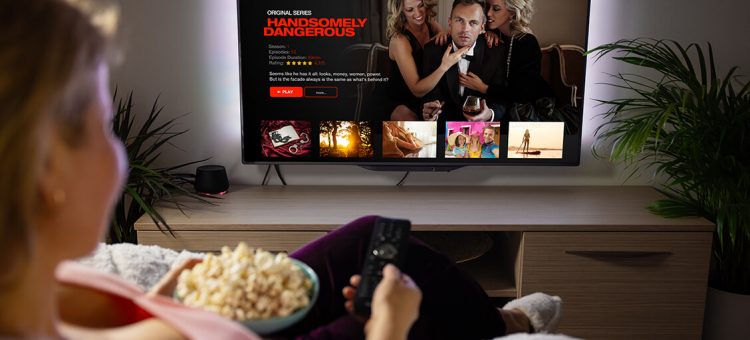Key findings:
- Customers are willing to pay between $9 to $14 per month for a streaming service, with $11 being the optimal price point, according to a Van Westendorp pricing analysis
- Viewership of cable and network TV fizzles among younger audiences as streaming services become the new normal
- Despite recent price increases, streaming subscribers still perceive Netflix to be better than or on par with top competitors
- Netflix remains the king of streaming services as competitors see greater levels of churn due to short-term subscriptions, limited selections, and promotional pricing
- Subscribers show interest in annual streaming subscription plans if offered at a discount over monthly pricing
Van Westendorp Pricing Analysis
The optimal price point for streaming services is $10, according to a Van Westendorp Price sensitivity analysis run using SurveyMonkey Market Research Solutions. A Van Westendorp model determines the range of acceptable price points for a product by asking consumers how much is “too inexpensive”, “a good deal”, “almost too expensive”, and “too expensive”:
- At what monthly price would you think that a video streaming service is too inexpensive to be worth subscribing to?
- At what monthly price would you think that a video streaming service is a good deal?
- At what monthly price would you consider a video streaming service to be getting too expensive, but still within consideration?
- At what monthly price would you consider a video streaming service to be too expensive to consider subscribing to?
This analysis on willingness to pay for a streaming service determined that consumers are most willing to pay between $9 to $14 for a streaming service, with $11 being the optimal price. Both the acceptable price range and optimal price has decreased from late 2020, as downward pressure on streaming prices reveal growing consumer demand for less expensive streaming options.
Viewership of cable and network TV fizzles among younger audiences as streaming services become the new normal
An overwhelming majority (83%) of U.S. adults watch streaming services at least monthly, with Gen Z and Millennials leading consumption. The move toward streaming has, however, come at the expense of cable and network TV: only 2 in 3 (65%) U.S. adults watch cable or network TV (at any frequency)
- Only half of Gen Zers (48%) and Millenials (50%) watch linear TV programming
- Gen Xers and Boomers, despite their high adoption of streaming services, continue to frequent linear TV (70% and 80%, respectively)
Despite recent price increases, streaming subscribers still perceive Netflix to be better than or on par with top competitors
Netflix still holds an edge to competing streaming services, despite their recent spate of price increases in early 2022, late 2020, and 2019. Only slightly more than half (55%) of Netflix subscribers are aware of the announced price increases, a sign of their inelastic loyalty toward the streaming service. Among streaming service subscribers aware of recent Netflix price increases, Netflix remains perceived as better, or on par with its main competitors:
- More than one in three perceive Netflix as a better value than its main competitors (HBO Max, Hulu, Amazon Prime Video, and Disney+)
- Slightly less than half view Netflix’s value as on par with competitors’
Netflix competitors see greater attrition due to short-term subscriptions, limited selections, and promotional pricing
Price is the leading driver of cancellations across all streaming services, with 40% citing high subscription costs as their main reason for ending their subscriptions. Netflix subscribers are more anchored to the streaming service as competitors see higher rates of cancellation due to reasons other than price, including cutting down on the number of streaming services, limited selection, ending of promotional pricing, and temporary subscriptions for specific content.
More than 2 in 3 (68%) U.S. adults would choose Netflix as one of the streaming services to subscribe to if they could only choose three, a sign of the streaming pioneer's staying power. Netflix is also the overwhelming leader across all age groups, while competitors jostle for second place:
- Among Gen Z and Millennial subscribers, Disney places second, followed by HBO Max.
- Amazon Prime Video rises to second among Gen Xers and Boomers
- Hulu trails most top competitors, but performs best among Gen Zers
More than 2 in 3 (68%) U.S. adults would choose Netflix as one of the streaming services to subscribe to if they could only choose three, a sign of the streaming pioneer's staying power.
Netflix is also the overwhelming leader across all age groups, while competitors jostle for second place:
- Among Gen Z and Millennial subscribers, Disney places second, followed by HBO Max.
- Amazon Prime Video rises to second among Gen Xers and Boomers
- Hulu trails most top competitors, but performs best among Gen Zers
Subscribers show interest in annual streaming subscription plans if offered at a discount over monthly pricing
An opportunity to address churn arises as three in five U.S. adults express interest for long-term subscriptions at a discount over monthly pricing. Demand for annual subscriptions increases with monthly spend, providing an opening for service providers to lock-in higher-paying customers.
Read more about our polling methodology here.



